Session 2 of the Asia Peace Conference Public Forum was attended by 11 representatives from the four countries participating in the conference, and the dialogue was focused on how to bring about a sustainable and stable order in the region. The representatives engaged in deep discussions about each country's dream for the future of Northeast Asia, based in the principles of peace and meaning agreed upon by the Asia Peace Conference.
Numerous attendees expressed their opinions on how the Asia Peace Conference should play an active role in presenting governments with a private sector vision for regional peace.
Pushing forward with the agreed-upon principles of peace: anti-war, anti-hegemony, and governance by the rule of law
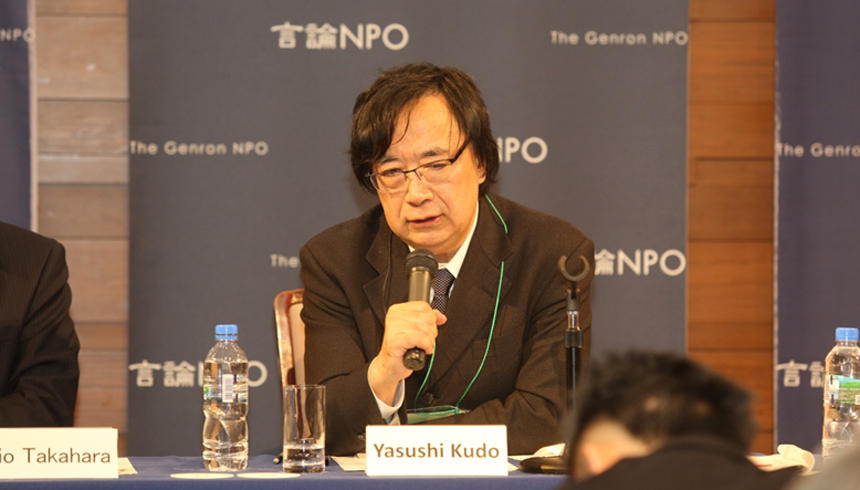
Yasushi Kudo, President of The Genron NPO, opened the talks by explaining the objectives behind the launching of the Asia Peace Conference. While he noted that it will take time to build a framework for future peace, he also reported that the four countries had come to an agreement on the primary principles through which Northeast Asia could achieve it, by remaining anti-war, anti-hegemony, and by following the rule of law. Kudo further explained that he hopes that there will be continued discussion into the creation of a vision built upon these principles, and into concrete methods of creating a code of behavior that will make these principles a reality.
The U.S. can no longer safely assume responsibility - The middle powers need to work with the private sector to support themselves
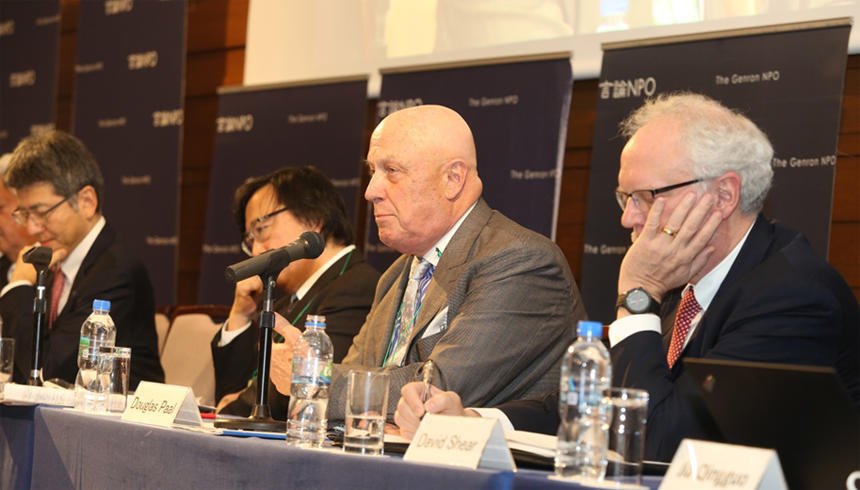
American Douglas H. Paal is a distinguished fellow at the Carnegie Endowment for International Peace and was next to speak. Paal began by speaking about the astonishing level of development achieved in the Asia Pacific since the Second World War, in spite of the fact that the region is richly diverse, and yet does not have the cooperative framework that Europe has. Looking back, Paal thinks that one factor behind that achievement is the participation and presence of the U.S.
However, since the end of the Cold War, the U.S. has squandered its resources in repeated failures in Iraq, Afghanistan and other areas, while Japan and South Korea have continued to grow and China has enjoyed a spectacular rise in power. Paal suggested that this has resulted in a relative decrease in U.S. presence in the region. In addition, he added, the U.S.'s increasingly introverted perspective has only helped that regional presence deteriorate further.
For this reason, Paal said that the U.S. is no longer capable of bearing all responsibility for the region, and that Japan and the other middle powers need to step up and take responsibility for guaranteeing their own security. At the same time, he stated that the private sector should be working on solutions as well, and to that end, emphasized the importance of the Asia Peace Conference.
The current dialogue is not enough to restore trust between the U.S. and China - a new platform must be established
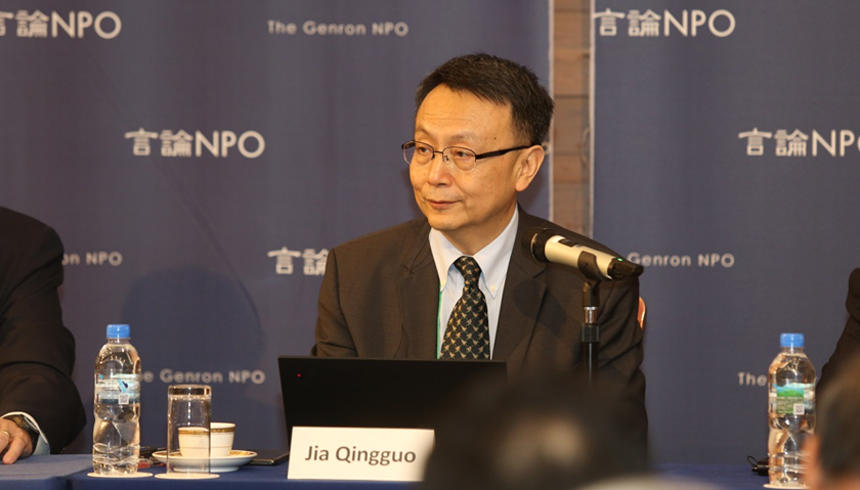
Speaking next was Qingguo Jia, former Dean of the School of International Studies at Peking University and a member of the Chinese People's Political Consultative Conference. Jia began by explaining that, except for North Korea, the countries of Northeast Asia have largely benefited from the current liberal order and that this is a strong motivation for maintaining it, therefore cooperation is very much possible.
However, Jia pointed out that one enormous barrier to such cooperation is the tension between the U.S. and China, and he particularly regrets the lack of trust between the two countries.
Jia argued that efforts should be made to rebuild that trust through improving upon the various dialogues still in place, or by making efficient use of such regional mechanisms as the ASEAN Regional Forum (ARF).
However, he also suggested that diplomatic efforts at the government level will not be enough. He also said it would be advantageous to have a Track II diplomatic framework that harnesses the knowledge of the private sector, and he expressed his desire to continue to further develop the Asia Peace Conference in the future.
Creating a vision for Northeast Asia by fitting the different national visions together like a puzzle
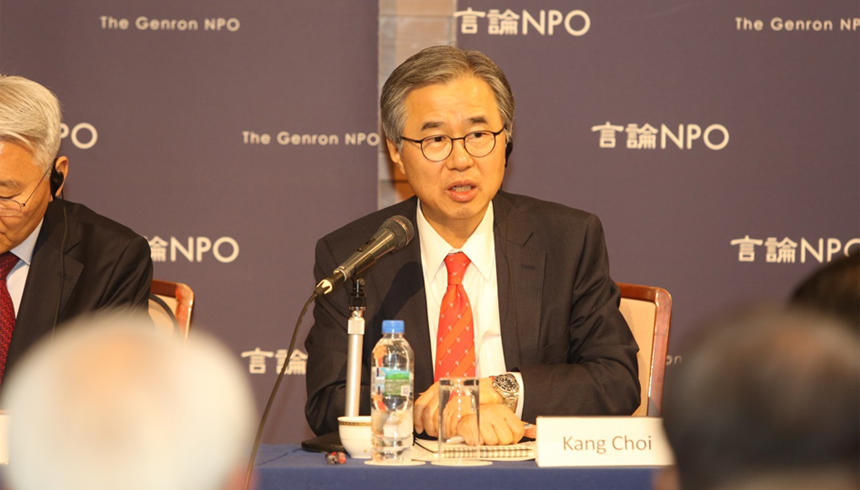
Kang Choi, Vice President of the Asan Institute for Policy Studies, presented a South Korean perspective. First, Choi noted that based upon the statements already provided by representatives from Japan, the U.S., and China, all four countries strongly agree upon the importance of the Asia Peace Conference. Based on that, he emphasized that the first step to take is to formulate a common understanding, and proposed a path for future discussion to achieve that.
Choi sees the situation thusly: each country has its own vision for Northeast Asia, and each has a dream it is aiming to achieve; these dreams should be considered pieces of a puzzle that, once fitted together, will result in a common understanding between the countries. He explained that the countries should seek out ways of working together, and not simply take unilateral approaches. Choi concluded by saying that a statement on the private sector's vision for Northeast Asia should be placed before each government, and the mission of the Asia Peace Conference is to press for action on this.
Kudo took over again as moderator, and in response to Choi's statement, asked the participants what dreams they have for the future of Northeast Asia.
Moving towards an Asian NATO
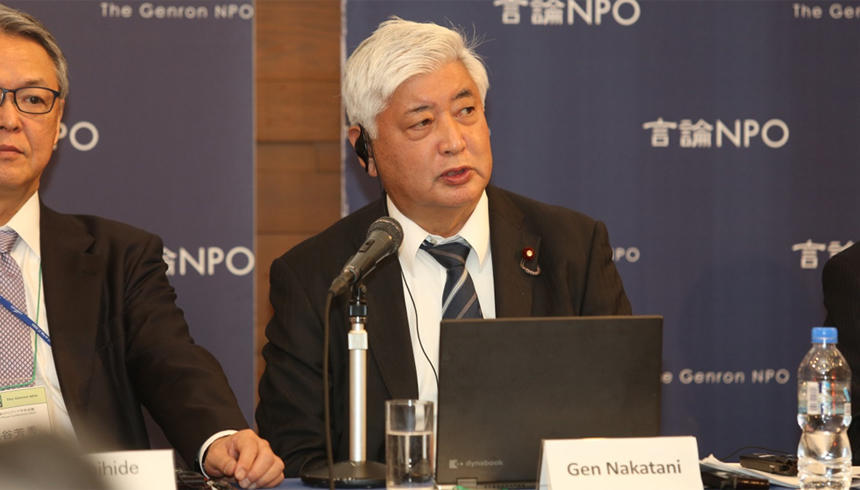
Gen Nakatani is a member of the House of Representatives and former Japanese Minister of Defense, and he stated that the biggest issue connected to peace in Northeast Asia is preventing a new cold war from breaking out between the U.S. and China. Nakatani believes what is urgently needed is the holding of international conferences designed to ease tensions, particularly as China is not currently included in any disarmament/nuclear weapon management mechanism.
Nakatani suggested that it could be effective to work together to resolve shared issues in order to build trust between the countries concerned, with opportunities for such cooperation to be found in responding to issues such as pneumonia caused by the novel coronavirus outbreak in Wuhan, China, and improving governance in new areas, such as the challenges faced in outer space and cybersecurity.
Finally, Nakatani expressed his dream for the region - the establishment of an Asian version of NATO - and in response to a further question by Kudo, said that China would be a member in such an organization.
The future of Northeast Asia depends on the restructuring of Japan-South Korea cooperation
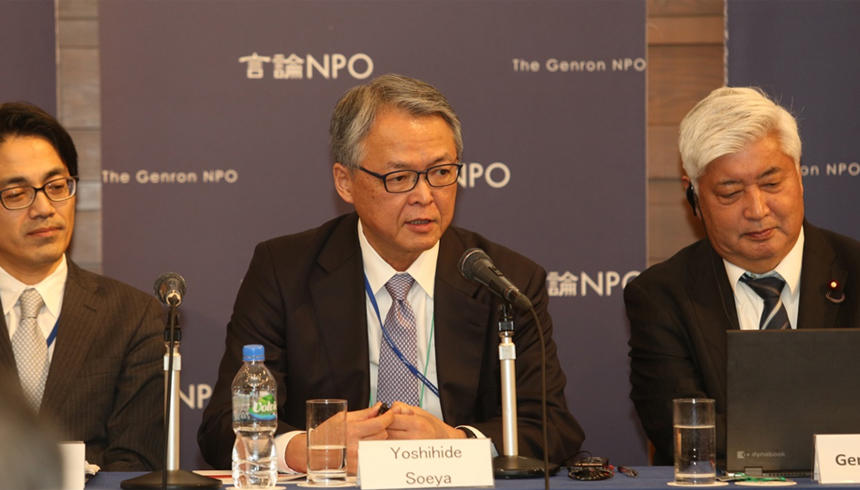
Yoshihide Soeya is a professor in the Faculty of Law at Keio University., and is known for popularizing the concept of the "middle power" in Japan. Soeya referred back to Paal's statement on middle powers, saying that it would be extremely difficult for one country to extend an influence on both the U.S. and China and change their behavior, so it is important for the middle powers to work together. He emphasized the most important partner for Japan in such a collaboration would be South Korea.
Soeya said that it is important for Japan and South Korea to cooperate with each other as China and the U.S. engage in their tug-of-war, each intending to create a regional framework including Japan and South Korea, but excluding each other. He explained that Japan and South Korea must reaffirm their mutual importance by seizing various opportunities for dialogue, and if they can cooperate with each other, that itself might be a means of blazing a path to a bright future for Northeast Asia.
U.S.-North Korea negotiations and intergovernmental diplomacy not enough to achieve denuclearization of North Korea - the private sector should be offering its knowledge
Former Secretary General of the ROK National Security Council Sang-Chul Lee described the Korean dream as being the peaceful unification of the Korean Peninsula, but he also lamented the fact that the peninsula has become Northeast Asia's biggest hotspot. In light of the stagnating negotiations between the U.S. and North Korea, Lee argued that a resolution should no longer be left to those two countries alone, and other related countries should become actively involved. At the same time, with intergovernmental diplomacy unable to achieve the desired results, Lee believes it is important for the private sector to provide recommendations based on its knowledge and experience.
The U.S.-Japan Alliance, and the effectiveness of the multilateral framework in Northeast Asia
Former U.S. Assistant Secretary of Defense David Shear pointed out that one point to keep in mind when building a multilateral framework is the necessity of deterrents to ensure the effectiveness of the framework. In Northeast Asia, Shear believes that deterrent to be the U.S.-Japan alliance. However, Shear said that it has become difficult for the U.S. to serve as deterrent on its own, and noted that there are many issues that need to be practically resolved before such a framework can be realized, including the issue of the necessity of Japan taking on a new role in the region.
Need to find a way for alliances and multilateral frameworks to co-exist
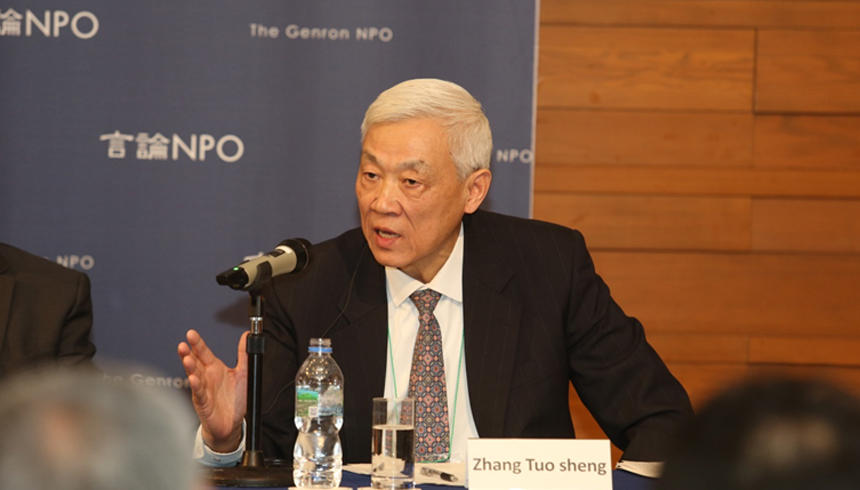
Tuosheng Zhang is Chairman of the Academic Committee at the China Foundation for International and Strategic Studies, and spoke about alliance issues connected to the future dream for Northeast Asia. The region is home to two important alliances in the U.S.-Japan and U.S.-ROK alliances. Zhang pointed out that because alliances are exclusive by their very nature, China is seen as an enemy and is rejected, but at the same time, Chinese President Xi Jinping has brought up the idea of "constructive security relations" at Japan-China summit meetings. Zhang also described how China's defense white paper discusses the multilateral security architectures in the Asia-Pacific region, and explained that China is not aiming to be hostile towards such alliances, but rather to find a way to co-exist with them.
If those alliances were to become less exclusive and more transparent, Zhang believes that it would also be easier for China to cooperate. Areas that would be particularly ripe for cooperation would be those issues for which the countries share a common interest, including the de-nuclearization of North Korea, and non-traditional security areas.
Zhang concluded by talking about NATO, agreeing with Nakatani that an Asian version of the organization should be built in Northeast Asia, and pointing out that while NATO was originally only military in nature, its function as a political organization is growing. Zhang hopes that such efforts would eventually lead to a mechanism through which the U.S. and China could co-exist.
Agreeing with China's approach through compromise, but complex decision-making mechanisms remain an obstacle
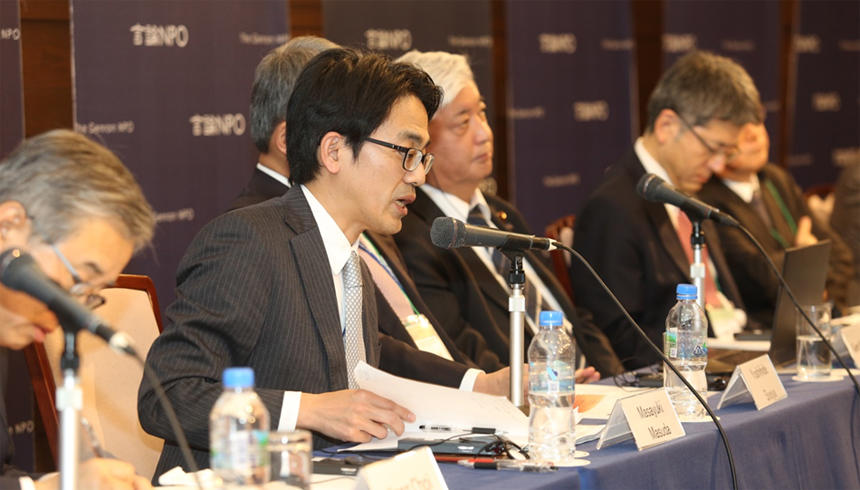
Masada is Chief Researcher in China research in the Regional Studies Department at the National Institute for Defense Studies in Japan. He responded to Tuosheng Zhang's comment on "constructive security relations," agreeing that the term "constructive" refers to the intention of formulating crisis management mechanisms and other institutionalized tools.
Masada noted that Japanese and U.S. military representatives have been able to clarify issues through dialogue, at which point a standard is formulated that leads to institutionalization, but he noted that this has not always been the case for Japan and China. He suggested that interactions with China have been more difficult to institutionalize due to the complex decision-making mechanisms that lie in the background.
While the U.S.-China tension will continue, the U.S. should remain involved with China
Paal responded to the previous discussion by expressing his belief that the U.S.-China relationship has already deteriorated too far, and that given the differences between the two systems, the competitive relationship is likely to continue into the future.
At the same time, he also pointed out that there are areas where it is still fully possible for the two countries to cooperate. As examples of such areas, Paal pointed to the China-led Asian Infrastructure Investment Bank (AIIB) and the Belt and Road Initiative.
The U.S. has always opposed such Chinese efforts, but the fact remains that there is high demand for infrastructure in Central Asia and other countries connected to the initiative, and Paal pointed out that stabilization of societies helps prevent terrorism, something that would benefit the United States. Therefore, he argued that the U.S. should give China credit for these new efforts, and formulate a new engagement policy to engage where appropriate and keep China from taking the wrong path.
To conclude Session 2, Kudo summarized the discussions, describing how they "revealed a part of each country's dream for the region," and that to a certain extent, those dreams share some things in common. Therefore, Kudo said, if a trust-building framework can be built and the dialogue can be continued, it will not be difficult to "bring those dreams closer to realization." This is yet another reason for Kudo's enthusiasm for continued discussions through the Asia Peace Conference, and his desire to engage in the historic effort to bring peace to Northeast Asia.

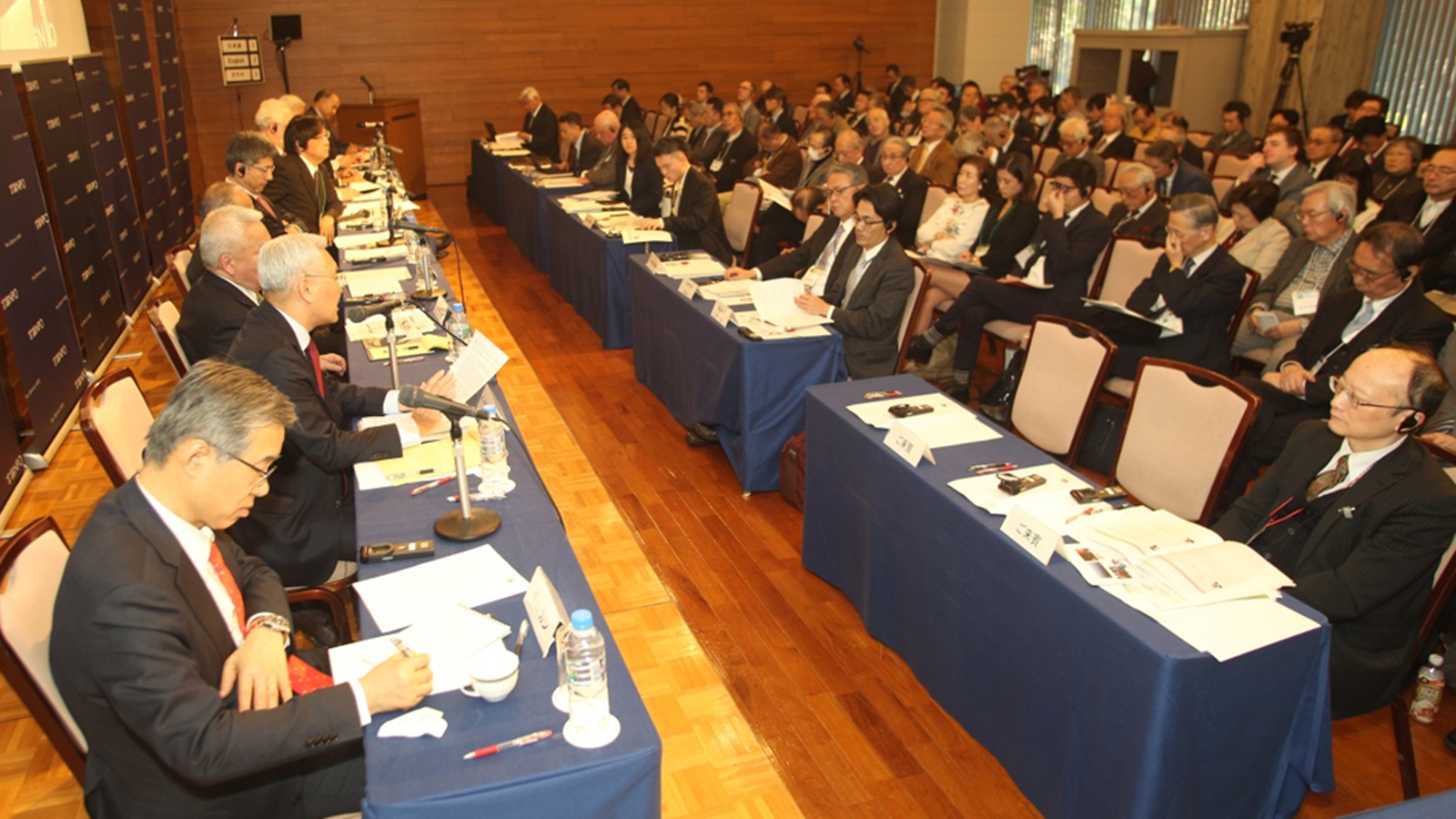
Post a comment